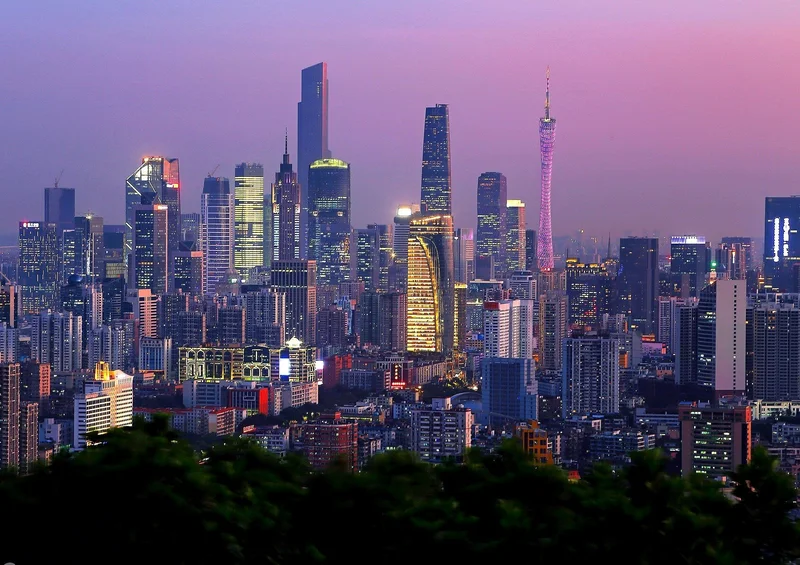guangzhou: National Games and Regional Integration
National Games: A Stress Test for China's Greater Bay Area Integration
Bridging the Bay with Batons and Bikes
The upcoming 15th National Games in China aren't just about showcasing athletic prowess. They're a live-fire exercise in regional integration, a large-scale demonstration of how Guangdong, Hong Kong, and Macao are attempting to function as a single, cohesive economic unit – the Greater Bay Area. And like any good stress test, this one will reveal both strengths and potential breaking points.
The narrative is compelling: athletes will be "racing across the borders," as Xinhua puts it, participating in events that physically link the three regions. We're talking about a 230-km cycling course that begins in Zhuhai, snakes through Macao via the Macao Bridge, crosses the Hong Kong-Zhuhai-Macao Bridge (a critical piece of infrastructure, by the way), touches Lantau Island in Hong Kong, and then loops back to Zhuhai. A marathon will also send runners across the Shenzhen Bay Bridge, marking the first cross-border marathon in the Games' history.
The organizers are touting what they call "hard connectivity" (the bridges, the high-speed rail) and "soft connectivity" (streamlined administrative procedures). Cyclists, for example, will supposedly experience a "no-brake" clearance, passing through border ports six times without stopping. Marathon runners will cross the Shenzhen-Hong Kong border without flashing their travel documents. It all sounds incredibly smooth, almost too smooth.
The "No-Brake" Border: Reality vs. Rhetoric
But let's pump the brakes for a second. The claim of "no-brake" clearance raises a few eyebrows. While the PR spin emphasizes seamless transitions, the logistical reality of moving hundreds, if not thousands, of athletes, support staff, and spectators across multiple borders – each with its own legal and regulatory framework – is inherently complex.
Consider this: the Hong Kong-Zhuhai-Macao Bridge, a symbol of this very integration, has seen significant traffic. Zhuhai Port alone has recorded over 93 million passenger trips and over 19 million vehicle crossings since its opening in 2018. That's a lot of volume, and while the average processing time may be acceptable, the variance is what matters during an event like the National Games. A single security delay, a misplaced visa, or a sudden policy shift could create a bottleneck that ripples throughout the entire schedule.
The question becomes: How much redundancy and contingency planning has been built into these "seamless" processes? What are the backup plans if the "green channels" become clogged? Are there dedicated medical teams stationed at each border crossing? Details on these critical operational aspects remain surprisingly scarce. Main Press Center to open on Friday as Guangdong outlines media plans for China's 15th National Games

Then there's the human element. Huang Mingzhong, director of the organizing committee office, talks about "joint planning and close coordination." Yeung Tak-keung, head of the Hong Kong coordination office, echoes this sentiment. But coordination is easy to talk about; it's far harder to execute, especially when dealing with multiple layers of bureaucracy and potentially conflicting priorities. The "one country, two systems" framework, while granting autonomy, also introduces inherent complexities in aligning regulations and procedures.
And this is the part of the report that I find genuinely puzzling. We're being asked to believe that these three distinct regions, each with its own unique legal and administrative systems, have somehow managed to create a truly friction-free border experience. It sounds more like a marketing pitch than a realistic assessment of the challenges involved.
The fact that the Games include events specifically designed to cross these borders suggests that the organizers are trying to force integration, to use the Games as a catalyst for closer cooperation. That's not necessarily a bad thing, but it does raise the risk of prioritizing optics over operational efficiency.
The real test won't be whether the cyclists and marathon runners make it across the finish line; it will be whether the underlying systems can handle the pressure without buckling. If the "no-brake" clearance turns into a stop-and-go nightmare, it will expose the cracks in the facade of seamless integration.
Integration? Show Me the Data.
The National Games are undoubtedly a significant event, but the hype surrounding regional integration needs to be tempered with a healthy dose of skepticism. The success of these cross-border events will hinge not on grand pronouncements or symbolic gestures, but on the mundane details of logistics, security, and inter-agency coordination. Until we see concrete data demonstrating that these systems can function reliably under pressure, the claim of seamless integration remains just that – a claim.
I'd like to see detailed data on border crossing times, incident reports, and contingency plan activation rates after the Games. Only then can we truly assess whether this exercise in regional connectivity was a success or just a well-orchestrated PR stunt.
Is This Integration, or Just a Show?
Tags: guangzhou
Hangzhou: What's Driving the Electronics Sector?
Next PostFranz Paasche's Columbia Exit: What We Know and the Ivy League Crackdown
Related Articles
